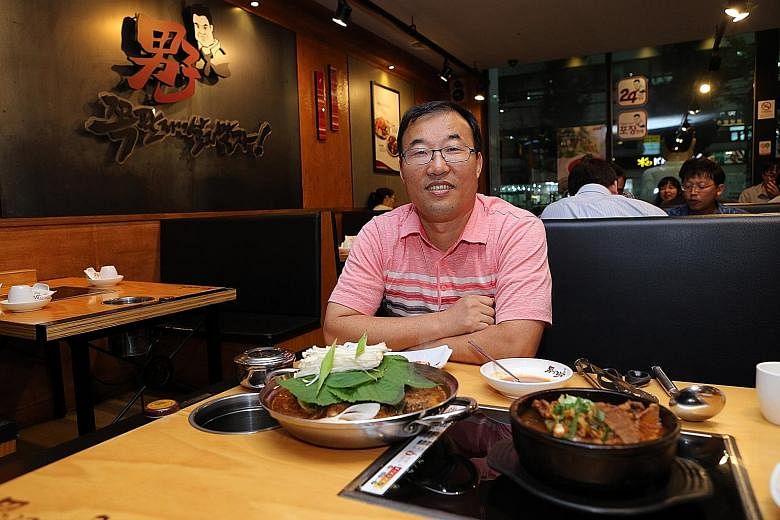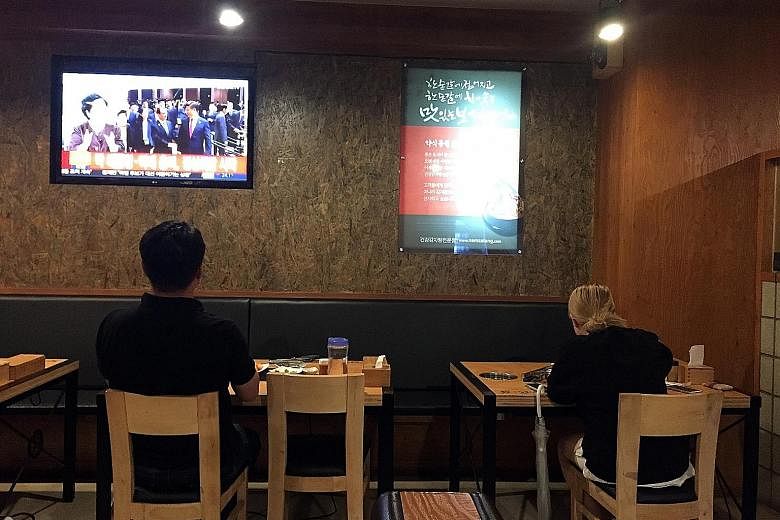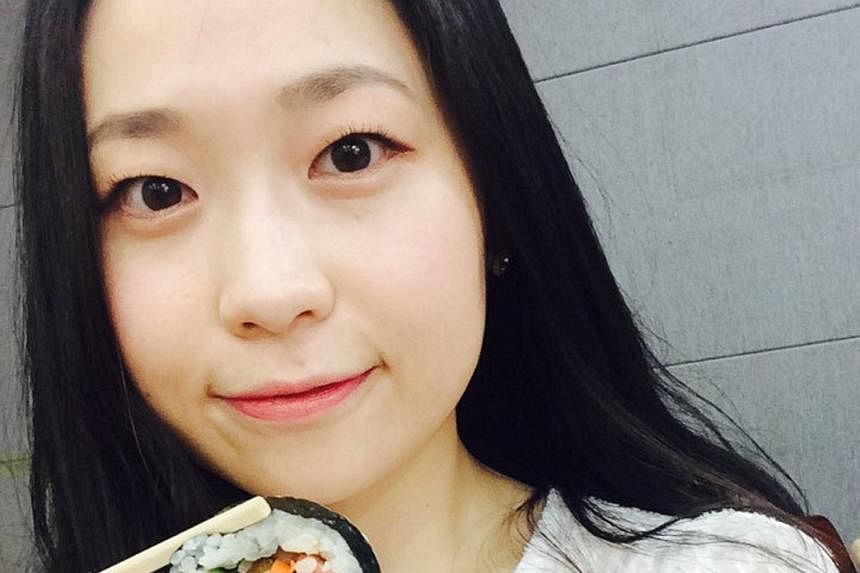When she was a teenager, Ms Yoo Hyo Jin would never eat out alone for fear that people would stare and think of her as someone "pathetic" with no friends.
Now 26, the tutor has no qualms about dining by herself, even at restaurants.
"As I grew up, I realised that people's opinions of me were not that important anymore," she said. "And if I'm really hungry, I don't really care what they think."
Ms Yoo is among a growing group of South Koreans who find liberation and joy in dining alone, even though it used to be considered taboo to do so.
The phrase honbap, which literally means rice for one person in Korean, was even coined last year to describe the dining trend that has taken the Internet by storm as more people started sharing their solo dining experiences on social media.
In a country that deeply values family kinship, school ties and all kinds of social connections, dining is considered a communal activity. Some restaurants even turn away solo diners to save the tables for bigger groups.
But a growing number of single households and a shift towards more individualism in today's selfie era have started to change the way Koreans behave at the dining table.
There are now 5.32 million single households in the country. They account for 27.2 per cent of the total number of households, according to the 2015 population census figures released on Wednesday. This is almost double the 2000 figure of 15 per cent. In fact, one-person households are the biggest type, followed by two-member families (26.1 per cent) and four-member families (18.8 per cent).
Experts attribute the change to the higher life expectancy, low birth rate and a reluctance to marry because of job insecurity and high property prices.
A recent survey by Shinhan Card Trend Research Institute revealed that more people are spending time and money on solo activities, from dining to watching movies and drinking alcohol. The number of customers who used Shinhan credit cards to pay for meals alone rose from 3.3 per cent in 2011 to 7.3 per cent last year.
The rise of the solo diner is a global trend. In the United States, an October 2015 survey by OpenTable, an online restaurant reservations provider, showed that bookings for singles grew by 62 per cent over two years.
A growing number of restaurants and food businesses in South Korea are cashing in on the trend, introducing ready-made meals sold at supermarkets or convenience stores, and customising menus for solo diners.
Namzatang, which is known for its gamjatang (spicy pork spine soup), introduced a scaled-down version of its signature dish, which is usually served in a hotpot for two persons or more, two years ago.
The 7,000 won (S$8.60) portion is very popular with solo diners, said owner Jang Sung Bae, who manages a chain of 70 restaurants selling all kinds of Korean cuisine.
He said solo diners now make up 30 to 40 per cent of his overall clientele, up from 10 to 20 per cent 10 years ago. He thinks the change is due to an increase in the number of single households and people marrying at an older age.
"The rise of the smartphone has also changed eating habits," he said. "With a phone in hand, you don't even need to have company anymore while you are out eating."
Restaurants have also started offering smaller pizzas, mini burgers, and shabu shabu hotpots for one person. Ichimen, which sells Japanese ramen, went as far as offering its solo diners privacy with table dividers that shield them from prying eyes.
People used to avoid dining alone to avoid being judged by others, said Dr Ijin Hong, a research professor at Yonsei University's welfare studies research institute. "Dining alone makes you look like you don't fit in, so those who eat alone would do it in places where they couldn't be seen, like convenience stores."
She added that this changed in recent years, as people became more individualistic and eating alone became more socially acceptable.
Ms Yoo said she has friends who would even go for buffets alone.
She added: "The good thing about eating alone is that we can calmly enjoy our food at our own time."
READ MORE
Dining alone in South Korea http://str.sg/4pRD




